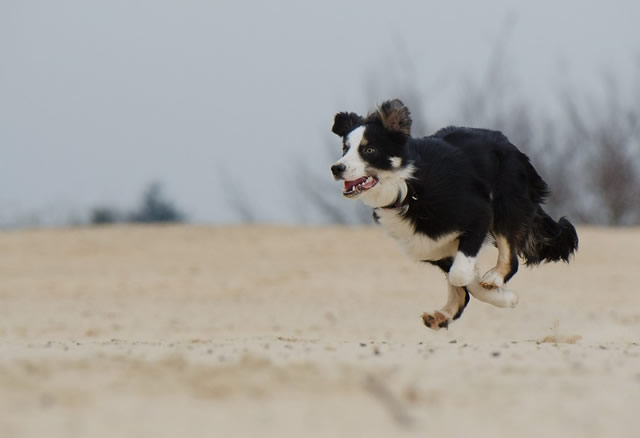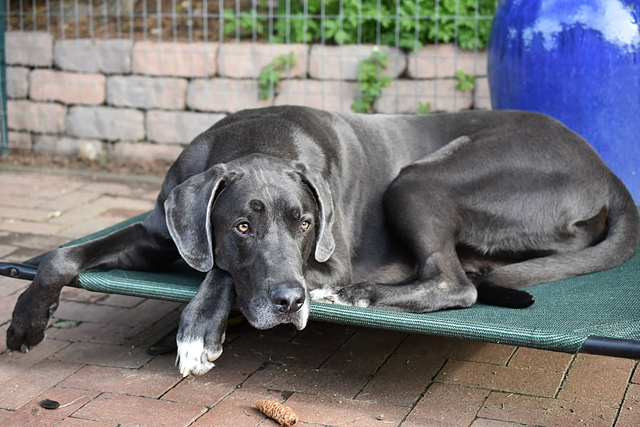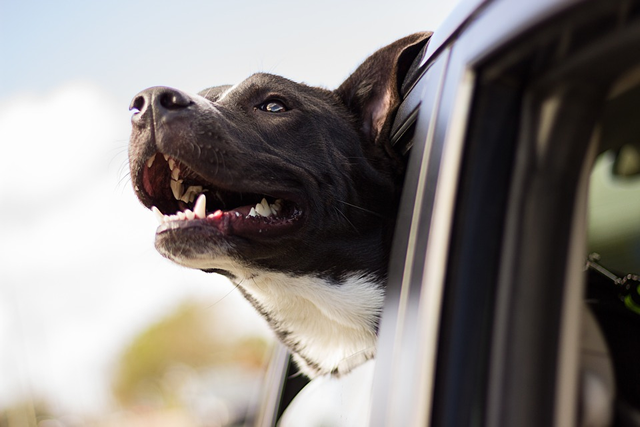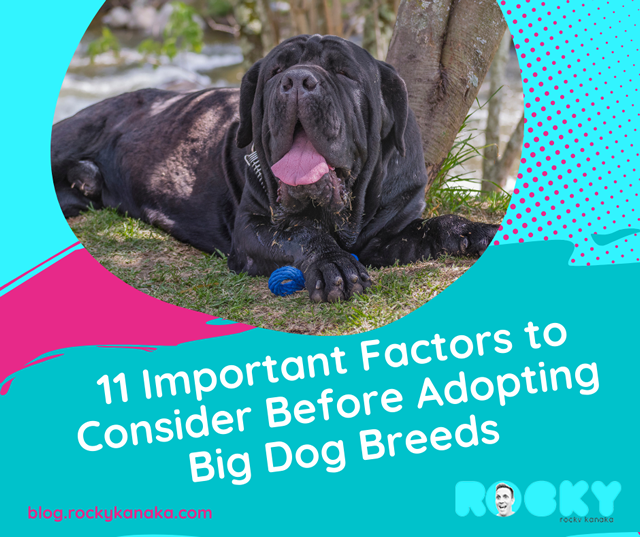11 Important Factors to Consider Before Adopting Big Dog Breeds
Adopting a dog, no matter the size, takes planning and preparation. However, getting a big dog breed requires a bit more forethought and thinking outside the box. For example, a doggy door for a 6-pound Chihuahua is going to look much different than a doggy door for a 120-pound mastiff. (Picture your door ripped off of its hinges.)
So what exactly do you need to know before committing to a big dog breed? Here are eleven of the most important factors you should consider.
1. Breed Characteristics
Every dog has an individual personality. That said, your dog’s breed, even if they’re mixed, can broadly inform what life will look like with your pet. Understanding your dog’s temperament in relation to their breed is essential especially if you’re looking to adopt a big dog.
Ideally, you want to look for the best fit for your family and lifestyle.
Breed characteristics will inform you of traits such as:
- Their size and weight when fully grown
- Coat(s) and shedding
- Stubbornness and trainability
- General disposition
- Potential health issues
2. Big Dog Breeds Have Big Stomachs
This might seem obvious, but big dogs eat a lot more food.
For instance, a Labrador Retriever could consume up to 30 pounds of food in a month. A Great Dane could easily double that. The costs can add up if you wish to feed your dog high-quality organic food (which is a good idea), or if they need to be on a special diet.
Big dogs also take big…erghm lets call them droppings, so be prepared to walk around with an extra large pick-up bag as well.
3. Energy Levels

Source: flickr.com
Big dog breeds need a lot of exercise every day to stay healthy and happy. This means you’ll need to make enough time for walks and playtime.
The optimal amount of exercise for your dog will be determined by several factors, chief among which is your dog’s energy levels. Dogs vary vastly in energy levels—one breed might work very well with your lifestyle, whereas another may be a poor fit.
Your current activity level should also inform your choice of dog breed. Don’t anticipate that once you adopt a dog, you will suddenly become drastically more active. For example, if you’re someone who already does a lot of hiking or running or spends a lot of time outdoors, then a high-energy level dog might be right for you. If you’re someone who prefers to spend most of the day cuddled up watching The Voice, then maybe consider a lower-energy level dog instead.
Here are some popular examples of high and low-energy breeds:
High-energy dogs:
- Labrador retrievers
- German Shepherds
- Boxers
- Border Collies
- Pit Bulls
- Huskies
Low-energy dogs:
- Bernese Mountain dogs
- Mastiff dogs
- Greyhounds
- Great Danes
- Bulldogs
Expert Tip: Without enough exercise, your dog might develop issues with separation anxiety and may even become destructive.
4. Big Dogs Make Wonderful Family Members
Big dog breeds dominate the AKC’s list of the ten most popular dog breeds for good reason—they’re sweethearts and love being part of the family.
Additionally, big dogs are loyal, exceptionally easy to train, and easily assimilate into household routines. According to a study by the University of Veterinary Medicine Vienna, big dogs are statistically better in three key categories:
- Obedience
- Aggression and excitability
- Anxiety and fearfulness
This further proves that big dogs make excellent pets and invaluable members of the family.
5. Training Is Critical for Big Dog Breeds
Many big dogs were bred for work which is part of why they need plenty of mental stimulation and training.
This is essential because you need to be in control of your pet at all times. Remember, they are not like smaller dogs where you can pick them up to get them out of mischief if need be.
Spend as much time as you can training your dog until he or she understands. Ideally, your big dog should understand and obey all the basic commands like sit, stay, wait, and come.
If you don’t have the time to train your dog, you can arrange for them to attend training classes. These also present the perfect opportunity to socialize your dog.

[do_widget id=text-13]
6. Cleaning and Grooming
Some big dog breeds require a lot more grooming (and vacuuming) than others.
Before getting a “heavy grooming” breed, consider whether you’re comfortable doing it yourself or hiring professional groomers.
Also, depending on the breed, you might have to clean up the occasional dog slobber in unexpected places.
“When I adopted Snuffy (a Mastiff-boxer mix), I knew that most giant breeds drool, and I’m not very easily grossed out, but I was totally unprepared for the sheer amount of slobber I’d have to deal with on a day-to-day basis.
I literally have to take a wet Swiffer mop to my walls and ceilings every day. Everything he brushes his head against gets slimed, from my bed sheets to all the furniture to clothing.”
—Minerva Siegel, writer and owner of a beautiful Mastiff-Boxer
Examples of big dogs breeds that may require extra grooming include:
- Saint Bernards
- Huskies
- Mastiffs
- Golden Retrievers
- Labrador Retrievers
- German Shepherd dogs
7. The Space You Have

Source: pxfuel.com
Big dogs need a lot more space, even if they’re mellow like Great Danes.
This means a large crate, a bigger car, and a bigger bed, not to mention all the large toys for those strong jaws.
But this does not stop with your home. You also have to consider the area where you live. That is:
- Do you have a big enough yard, and is it fenced?
- Does your apartment complex allow pets in common areas?
- Is there a dog park near where you live?
Expert Tip: Confining your large dog in a small space with no outlet for their energy will drive you both crazy.
Also, consider the accessibility of your home. Remember, large dogs can reach a lot more things. Ensure your cabinets are secured to keep your pet from getting into things he’s not supposed to.
8. Big Dogs Are Strong Dogs
Ideally, your strength level should match the size of your big dog—you don’t want to be dragged down the street or knocked over by an enthusiastic greeting.
If you’re of smaller stature and get a big dog, you will likely be walking a dog that weighs at least as much as you, if not more.
This should not be a problem with proper training, but it bears reiterating — training your big dog well is going to be very, very important.
9. Local Leash Laws and License Requirements
Different states, cities, and counties have different pet regulations. Make sure you know the regulations in your area before adopting a dog.
Some of the regulations to be on the lookout for include:
- Does your city require you to have a license to own a dog?
- Does your dog need a rabies tag on his collar?
- Can your dog run off-leash, and if so, where?
- What is the maximum leash length allowed?
- Is your city dog-friendly in general?
This might seem like a bit of a hassle, but it’s far better than the alternative. You don’t want to be forced to move, or worse,to relinquish your dog because you didn’t know the area regulations.
10. Do You Rent or Own Your Home?
If you don’t own your home, you may need to come to terms with the fact that getting a big dog breed means fewer rental options.
Many rental properties flat-out don’t allow pets.
Those that do often have size restrictions, breed restrictions, hefty pet deposits, and increased monthly rates.
Before adopting a dog, make sure you have your housing figured out. You don’t want to find yourself in a position where you have to choose between your pet and your home.
11. Trips and Travel Get Complicated

Source: pixabay.com
Traveling with a big dog requires significant planning. For road trips, you’ll need a car big enough to fit your family, your belongings, and a large, angsty dog.
With air travel, you’ll need to buy an airline-approved crate for your pet and pay a fee to have your dog ride in the cargo area.
If you can’t travel with your dog, boarding kennels typically charge more for big dogs than for smaller ones.
Related: Small Dog Breeds That Make the Best Companions for Kids
Expand Your Knowledge About Big Dog Breeds
Owning a big dog has its quirks and challenges, but these quirks and challenges are also part of what make big dogs such special companions.
It’s also why it’s such a shame that finding homes for larger rescue dogs can be difficult. Underneath that big exterior, they are just giant lovable goofs!
A misconception about rescue dogs is that they’re dirty and unhealthy. The truth is, in fact, quite the opposite. Rescue dogs are vaccinated, microchipped, and often neutered at rescue centers automatically. It’s also a requirement for animal shelters to have the treatments needed to get rescue animals ready for adoption.
So if you’re looking to adopt a big dog breed, please consider adopting from your local animal shelter.
About Rocky Kanaka
I am a pet rescue advocate, Emmy-nominated host and creator of my own show. I tell the world about pet adoption, fostering, and volunteering through the beautiful stories I share.
I’m a dog dad to a rescued boxer named Flip, a blind Cane Corso called Kobe, and a senior terrier-mix named Zoey, along with the many foster dogs I rehabilitate on their way to their forever home.
Enjoy magic turnarounds, heart-warming rescues and meeting unique people and their incredible dogs via YouTube, Facebook, Instagram.
Share of Facebook:

